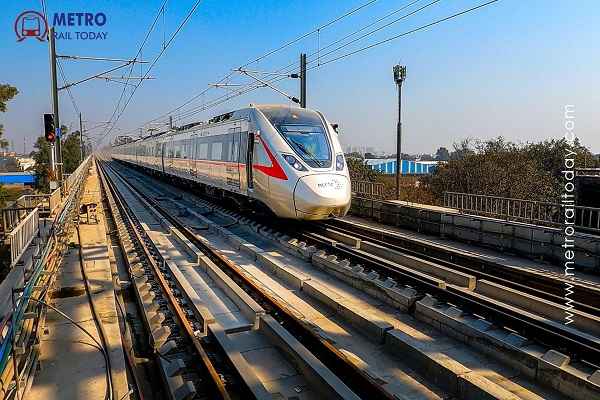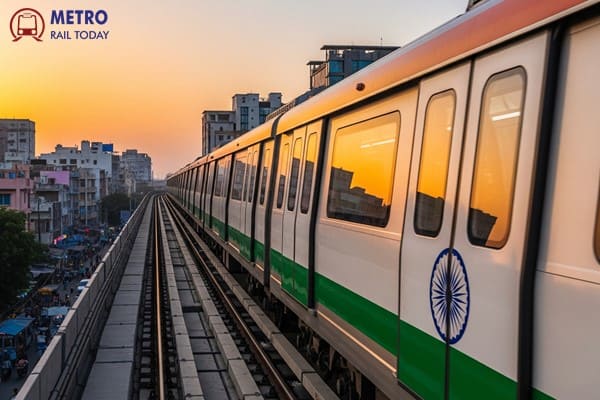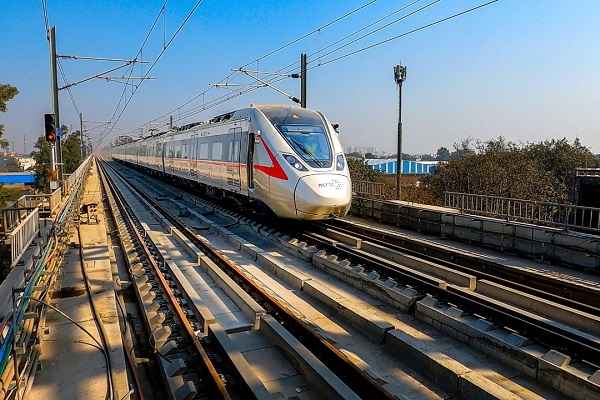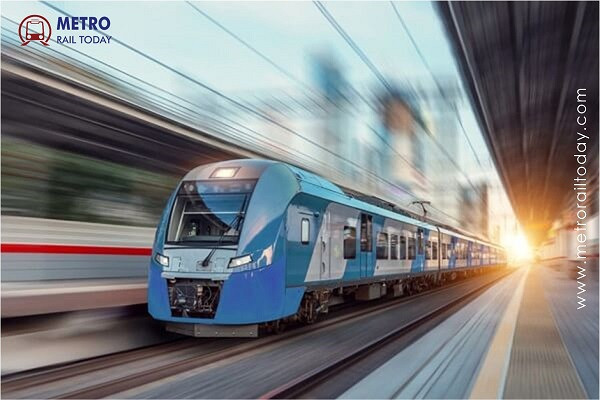 SYSTRA acquires Ardanuy Ingenieria to bolster Global Rail and Urban Transport expertise
SYSTRA acquires Ardanuy Ingenieria to bolster Global Rail and Urban Transport expertise Metro, Monorail and Pod Taxis: How MMRDA is Reinventing Mumbai’s Urban Transport?
Metro, Monorail and Pod Taxis: How MMRDA is Reinventing Mumbai’s Urban Transport?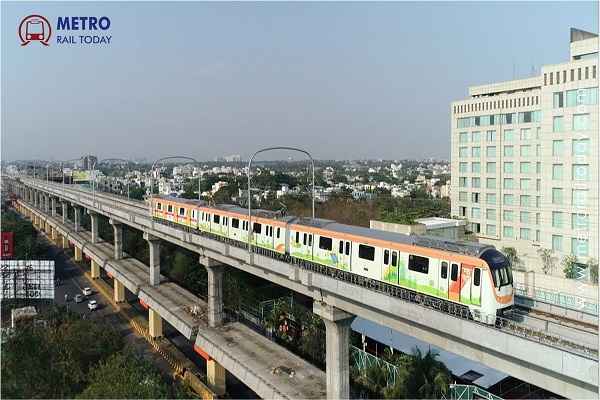 Maha Metro partners with IIT Kanpur to shield Nagpur and Pune Metro Systems from Cyber threats
Maha Metro partners with IIT Kanpur to shield Nagpur and Pune Metro Systems from Cyber threats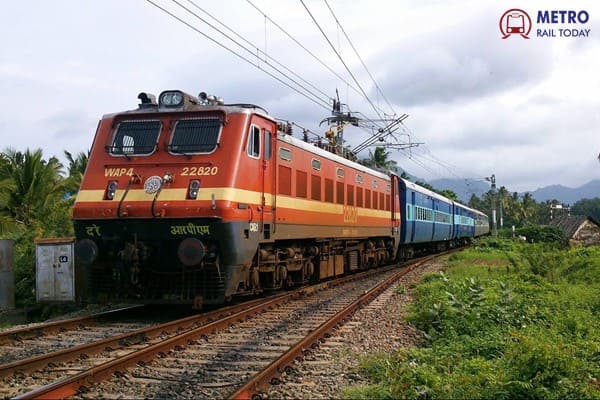 R. Rajagopal appointed as Member (Traction & Rolling Stock), Railway Board, Ministry of Railways
R. Rajagopal appointed as Member (Traction & Rolling Stock), Railway Board, Ministry of Railways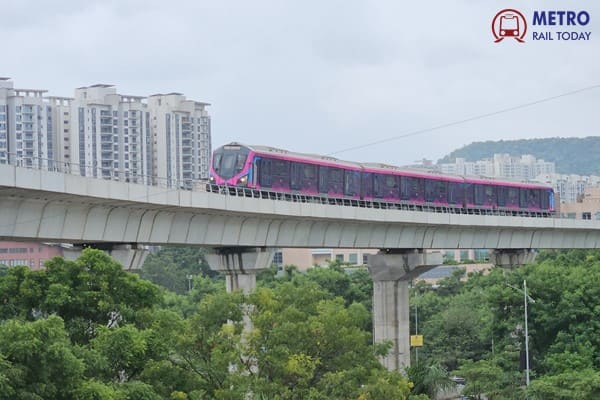 Maha Metro to appoint DPR Consultant for Pune's Shivajinagar-Kondhwa Metro Line
Maha Metro to appoint DPR Consultant for Pune's Shivajinagar-Kondhwa Metro Line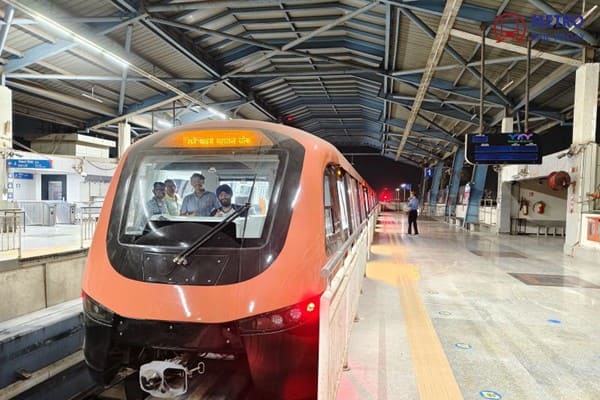 Mumbai Monorail suspension sparks Job Losses and Backlash despite system upgrade plans
Mumbai Monorail suspension sparks Job Losses and Backlash despite system upgrade plans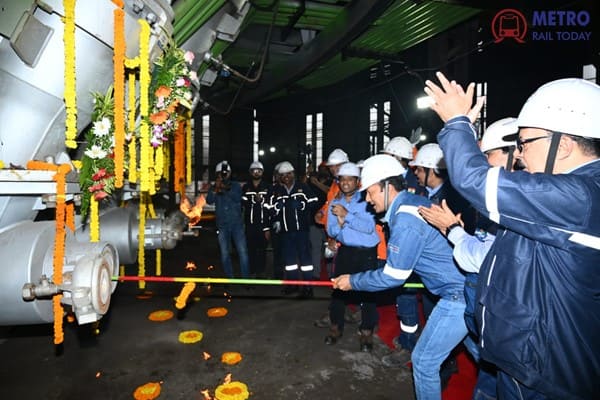 Jindal Steel Commissions One of India’s Largest Blast Furnaces in Odisha
Jindal Steel Commissions One of India’s Largest Blast Furnaces in Odisha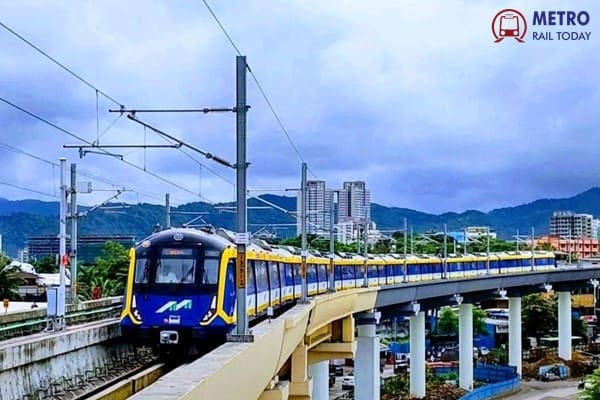 RDSO successfully conducts Brake and Speed trial tests on Mumbai Metro Line 9
RDSO successfully conducts Brake and Speed trial tests on Mumbai Metro Line 9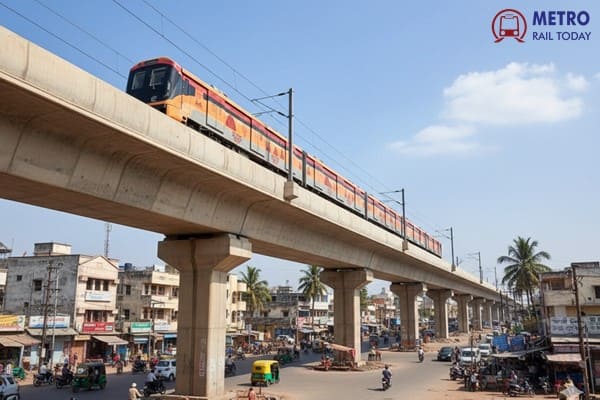 Patna Metro gears up for public launch, Final Trial Run scheduled for September 29
Patna Metro gears up for public launch, Final Trial Run scheduled for September 29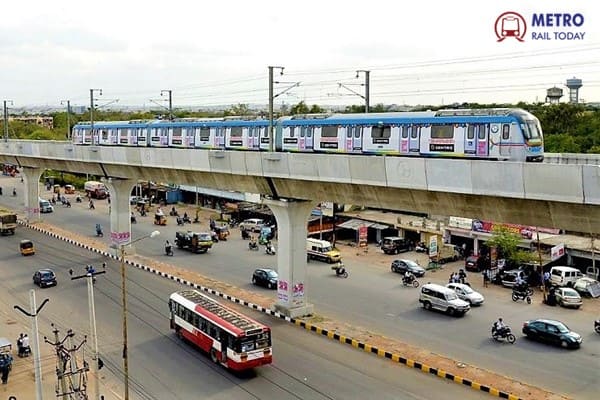 Telangana Govt takes over Hyderabad Metro Phase 1 as L&T exits project
Telangana Govt takes over Hyderabad Metro Phase 1 as L&T exits project
In-depth Analysis: RRTS could be best alternative of India's Modern Public Transport System
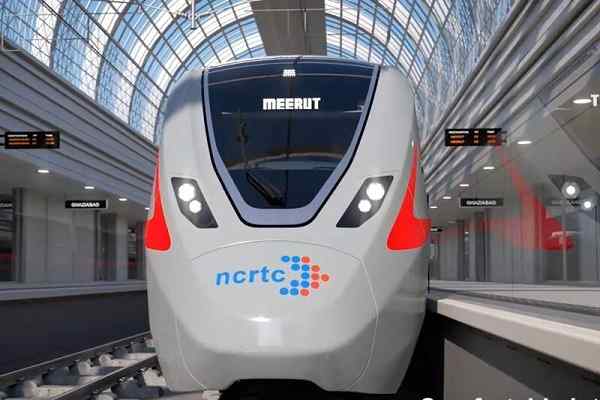
National Capital Region (NCR) is a multi-state region with the National Capital as its centre. The NCR spreads over an area of about 35,000 sq. km, comprises the entire National Capital territory of Delhi and some parts of the neighboring states of Uttar Pradesh, Haryana and Rajasthan. The National Capital Region Planning Board (NCRPB), in order to enhance the connectivity within the NCR, has proposed to connect urban, industrial (SEZs/industrial parks), regional and sub-regional centers through a fast rail based Regional Rapid Transit System (RRTS).
The objective of Regional Rapid Transit System (RRTS) is to reduce dependency of commuters on road-based transportation. The NCRPB conducted a study on Integrated Transportation Plan for NCR projecting figures for 2032 and has identified eight rail based rapid transit corridors to enhance the efficacy of the transportation system in the NCR.
- Delhi - Ghaziabad - Meerut RRTS Corridor
- Delhi – Gurugram – SNB – Alwar RRTS Corridor
- Delhi – Sonipat - Panipat RRST Corridor
- Delhi – Faridabad – Palwal RRTS Corridor
- Delhi – Bahadurgarh – Rohtak RRTS Corridor
- Delhi – Shahadra – Baraut RRTS Cooridor
- Ghaziabad – Khurja RRTS Corridor
- Ghaziabad - Hapur RRTS Corridor
To implement these proposed corridors, the Govt. of India has formed a special purpose vehicle (SPV) in the name of National Capital Region Transport Cororation (NCRTC). The NCRPB has decided to implement first three RRTS corridors as priority corridors under Phase 1.
What is RRTS?
According to NCRTC, the Regional Rapid Transit System (RRTS) is a new, dedicated, high speed, high capacity, comfortable commuter service connecting regional nodes in NCR. This system is different from conventional Railway as it will provide reliable, high frequency, point to point regional travel at high speed along dedicated path way. And alos it is different from metro as it caters to passengers looking to travel relatively longer distance with fewer stops and at higher speed. The major different between Metro Rail system and RRTS is explained in following table:
| Metro Rail | RRTS | |
| Design Speed | 90 kmph | 180 kmph |
| Operational Speed | 80 kmph | 160 kmph |
| Average Speed | 32-40 kmph | 100-150 kmph |
| Time To Travel | 1 hour/100 km | 3 hours/100 kmph |
What is NCRTC?
National Capital Region Transport Corporation (NCRTC) is a joint venture company of Government of India and Government of Delhi, Government of Haryana, Government of Rajasthan and Government of Uttar Pradesh, under the administrative control of Ministry of Housing and Urban Affairs (MoHUA). It is mandated for implementing the Regional Rapid Transit System (RRTS) project across the National Capital Region (NCR), ensuring a balanced and sustainable urban development through better connectivity and access. NCRTC was formally incorporated on August 21, 2013 as a Company under the Company Act, 1956.
Project Cost & Funding
The estimated project cost of first three priority corridors are as under:-
| Corridor | Project Cost | Internal Funding | External Body |
| Delhi-Meerut RRTS Smart Line | ₹30,274 crore | Govt. of India, State Govts of Delhi and Uttar Pradesh | ADB, NDB |
| Delhi-Alwar RRTS Smart Line | ₹37,000 crore | Govt. of India, State Govts of Delhi, Haryana and Rajasthan | NA |
| Delhi-Panipat RRTS Smart Line | ₹21,627 crore | Govt. of India and State Govts of Delhi and Haryana | NA |
Key challenges in the transport systems in the National Capital Region
Connectivity options currently available in the National Capital Region (NCR) include time-tabled trains for intercity travel, Delhi Metro Rail, DTC Buses and taxis etc. Given the urban expanse of the region and concentration of economic activity in few central pockets, what is missing is a fast, reliable and comfortable mobility solution for regional commute between urban and sub-urban nodes. This is the gap that the RRTS, a rail-based regional transit system is going to plug in.
"Let us take example of Delhi-Meerut connectivity. Existing road connection between Delhi and urban nodes like Sahibabad, Ghaziabad, Modi Nagar enroute to Meerut passes through congested roads prone to vehicle accidents, and any further widening of roads in this corridor will involve huge rehabilitation and resettlement issues. The travel time from Delhi to Meerut city centre to city centre, even with private vehicles is more than 3 hours during peak hour traffic. Also, the existing rail transport has low frequency, lacks reliability and has high travel time. Further, as per published data, the line capacity utilisation of Indian Railways network on this route is more than 100 percent. Hence it is not feasible to increase the frequency of existing services significantly," said Vinay Kumar Singh.
Delhi-Ghaziabad-Meerut RRTS corridor will allow commuters to travel from Meerut to Delhi in less than an hour. The requirement of better regional connectivity in the form of RRTS has been long identified as one of the most critical interventions required to achieve balanced and harmonised development of NCR.
In line with the international experience, once operational, a high throughput system like RRTS will unlock economic development potential of the entire region, decongest the capital city, and integrate the NCR in true sense by providing transit connectivity to various urban and sub-urban nodes.
Pasenger Comfort and Uniqueness of RRTS
Metro train systems have revolutionised the way people travel and have enhanced the adoption of mass public transport systems within the geographical limits of a city. RRTS will provide fast, safe, and comfortable mode of intercity commute in NCR.
While implementing the RRTS, NCRTC is building a huge network of networks in the region. Several RRTS stations have been strategically planned so as to enable seamless integration with other modes of transport like metro stations, railway stations, inter-state bus terminals (ISBT), bus stands/depots, etc. This will help people to travel seamlessly from one point to another and save significantly on travel-time.
"If we talk of the difference from Metro systems, RRTS trainsets will have a design speed of 180 Kmph, and a resultant average speed of about 100 km per hour, which is three times faster than the current resultant average speed of Metro trains of 30-35 km per hour," said Vinay Kumar Singh.
Further, RRTS trainsets, which are being designed and manufactured in the country, will provide features like comfortable 2x2 transverse seats, overhead luggage racks, USB/ electric charging for mobile/ laptops, onboard Wi-fi for infotainment, and one premium class coach in each train. Another important intervention that we have done is to enable the RRTS infrastructure, be it stations or trains, to carry patients on stretcher/wheelchair in case of rare medical emergencies. "I believe this facility will prove to be a life saviour for people on the corridor by providing them access to the most advanced medical facilities of the country," said Vinay Kumar Singh.
Technologies that make RRTS first-of-its-kind in India
True, owing to the high design speed of 180 kmph, every sub-system of the RRTS has application of technology at a different level from its previous applications in India. Moreover, as a strategy we have adopted state-of-theart, future looking technologies across these sub-systems therefore making it a first-of-its-kind implementation in India. For example, even in case of underground civil structures, tunnel diameter will be higher owing to provision of luggage racks in the coaches and higher speed. Also, the viaduct girders are heavier and stiffer to support low tolerance track.
For low maintenance ballastless tracks for high speed, Austrian pre-cast track technology, which is considered one of the best available track systems globally, is being installed for the first time in the country. Rigid Overhead Catenary System for design speed of 180 kmph is being installed for the first time in India.
NCRTC is implementing European Train Control System Level 2 (ETCS L2) signalling in RRTS, one of the most advanced signalling & train control system in the world. This will be for the first time in the world that combination of the latest ETCS Standard, the latest Digital Interlocking and Automatic Train Operation (ATO) over Long-Term Evolution (LTE) radio will be deployed. ETCS Level 2 system will allow interoperability among different RRTS corridors.
Further, modern system-operated, Made-in-India rolling stock with high acceleration/ deceleration shall be used for RRTS which shall be different from Metro systems.
Last but not the least, for the first time in India, Metro services in Meerut, shall be operated on the same infrastructure of RRTS which is a different service altogether adding to the technological complexity.
New innovations and technologies being adopted in the RRTS project
Certainly, making RRTS a technologically advanced system has been one of the core strategies since beginning. I have always encouraged my team to adopt best-in-class technological solutions for not only enhancing passenger experience but also in the implementation of the project.
NCRTC is using innovative IT enabled tools and modules, developed inhouse for various aspects of project implementation. The tool for project monitoring and management, called SPEED, developed by our own IT team has been refined iteratively with our own implementation experience and has become so effective that NCRTC is even supporting other public transit organisations to implement this tool for their project management.
In addition to SPEED, NCRTC is using many other technological solutions, which are helping us make implementation more effective and efficient. These include Common Data Environment (CDE) which helps teams collaborate and exchange documents on one platform with clearly defined workflows and Building Information Modelling (BIM) which is a virtual reality-based technology that provides a digital representation of the physical and functional characteristics of the RRTS project. BIM uses CDE to share intelligent 3D model and enables document management, coordination, & simulation on a real-time basis, forming a reliable foundation for decisions during the project lifecycle. With 3D models Virtual Reality (VR) views, everyone in the team knows from day one that what kind of structure they are going to construct, making the collaboration between designers and engineers in the field seamless and smooth. This helps us in saving time in resolving conflicts and reducing capex.
Another innovative technology that NCRTC implemented successfully, is use of Continuous Operating Reference Station (CORS) network with multiple Global Navigation Satellite System (GNSS) base stations which are located at stable locations and these stations operate 24X7 at a distance of 5 to 10 km along the corridor. This is an advanced technique which eliminates distance dependence, ionospheric and manual errors in surveys and enables availability of accurate reference points for installation of tracksystem, etc.
Leadership Experience
Vinay Kumar Singh is a 1988-batch officer of Indian Railway Service of Engineers (IRSE). At the young age of 22, his professional journey started from Vadodara, Western Railways. Maintenance of highly demanding Ahmdebad-Kandla Port rail line was one of the key assignments that gave him the right exposure and learning to deal with complex projects having multiple dimensions.
Singh has many firsts to his credit, post his stint with Indian Railways he joined Delhi Metro Rail Corporation (DMRC) mandated to construct India’s first mass rapid transit system in Delhi as the deputy chief engineer responsible for the construction of the first section of Delhi Metro Rail Project. His exceptional work at Delhi Metro's Phase 1 led him to be fondly known as the Star of Delhi Metro Rail Project.
He then moved towards bringing high-speed rail technology to India. As first CEO of High Speed Rail Corporation Limited a subsidiary of RVNL, he extensively studied the global high speed rail systems such as that of Spain, France and Japan.
In 2016, Singh joined NCRTC as its first regular Managing Director when the project was only on papers. Singh is leading from the front and made commuter centric modifications in the Detailed Project Report (DPR) and within six months the NCRTC Board approved DPR of Delhi-Ghaziabad-Meerut RRTS Corridor and since then there was no looking back.
"During my career spanning more than three decades, I consider myself fortunate to have worked in positions where in I could gather good understanding of advanced technologies in the railway sector in addition to enhancing my management knowhow. In my current role, I have been given to spearhead the RRTS project which is probably technologically most advanced implementation being undertaken in the rail-based infrastructure sector in the country. My past experience of developing the foundation of highspeed project in India has proved quite beneficial. For developing the right knack of leading project implementation, I give credit to my initial stints at Indian Railways and Delhi Metro," said Vinay Kumar Singh.
"Also, acknowledging how I have learnt throughout my career, I encourage employees across the board to keep learning new technologies and systems, provide opportunities to them for upskilling, remain open to new ideas and initiatives, and challenge the ‘status quo’. Further, in this organisation, I have tried to build a culture which prioritises a commuter-first approach in all our plans, strategies, and actions," he added.
"I believe focus on selection and upskilling of a committed and passionate team can do wonders and we are working together to prove this with a timely and successful implementation of RRTS," he said.
Singh has been Director on the Board of various Special Purpose Vehicles (SPVs) involved in planning and development of Public Private Partnership projects of port connectivity and Railways. He also served in Ministry of Railways, Government of India as Executive Director looking after all the PSUs.
Ideal solution for mobility
Well, certainly RRTS can pave the way as a transformative mobility solution that can play key role in providing sustainable solutions to resolve the multiple crises being faced by our urban centres. However, without a close and dynamic integration of transport and land-use planning, the problem can’t be solved in its entirety.
Currently, with Metro System commuters in NCR provide a “one-hour access” in a radius of about 30 Kms from the city centre. Once RRTS is operational, commuters will be able to travel in a radius of about 100 Kms within an hour. This average speed can be further increased to up to 125 Km/hr if we enable our stations for hopping services. Thus, with RRTS coming in, one can easily stay in their hometowns like Meerut, Ghaziabad, Modinagar, Manesar, Panipat and travel to Delhi within an hour, to access education, employment, healthcare and recreational facilities.
RRTS will enhance overall productivity of NCR leading to greater economic activity, encourage polycentric development in the region, and enhance reach to affordable housing. RRTS will entail a significant modal shift of passenger transport from road to rail, help reduce vehicular congestion, air pollution, and permanent migration to Delhi. With multi-modal-integration as one of the core strategies, RRTS will lead to creation of a huge network-of-networks in the NCR and increase in share of public transport in the region. RRTS can be replicated to provide high-speed seamless connectivity to other urban agglomerations. If given a mandate, NCRTC will be glad to play a strategic role to support implementation of similar high-speed mobility projects in the country.
Deadline of project
NCRTC has been given the mandate to implement eight RRTS corridors connecting the key nodes across NCR, with Delhi-Meerut, DelhiPanipat, and Delhi- Alwar being the three corridors to be developed in the Phase-1.
The Priority Section of 17 kms between Sahibabad to Duhai will be commissioned by March of 2023. Commissioning of the full corridor from Delhi to Meerut, along with metro services in Meerut, will happen by 2025. While the target is to commission by March of 2023, but the speed at which our teams are working, we are confident that we will deliver it before the schedule.
The progress of the project is attributed to the indomitable spirit of more than 14,000 workers & 1100 engineers working passionately at the RRTS sites, and cooperation of our key stakeholders - Ministry of Housing and Urban Affairs (MoHUA), State Governments of UP, Haryana, Rajasthan, & Govt. of NCT of Delhi.





